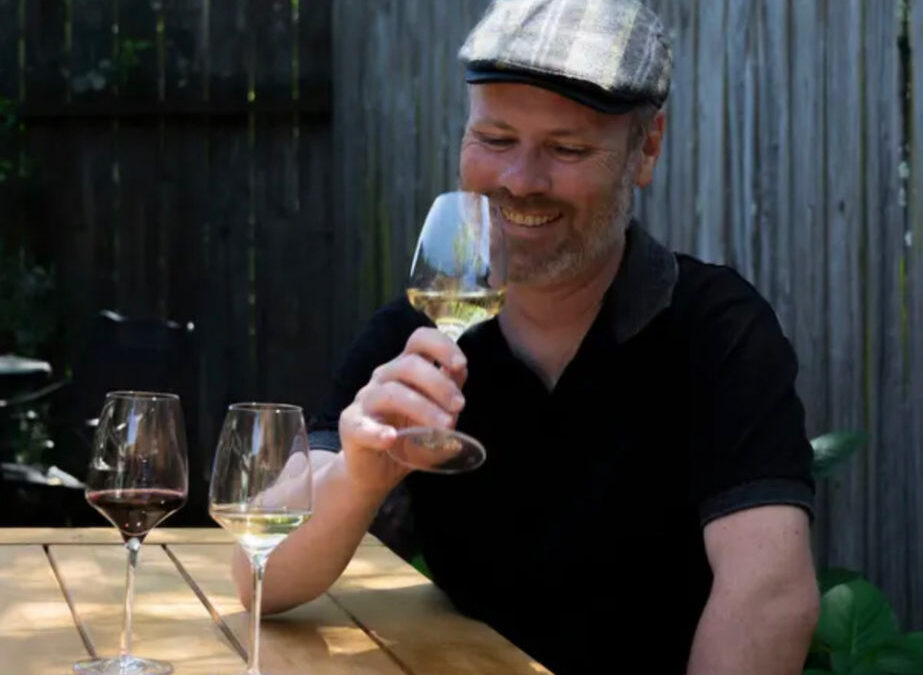
by Adam Chase | May 16, 2021
It’s official, Grape Experience is now offering in-person classes in both Boston and San Francisco (check out the website to see upcoming courses and enrollment deadlines). Since it’s been a while since we’ve seen each other face to face, we decided to catch up with a few of Grape Experience’s instructors and reintroduce them to our wine-loving community. First up is WSET Certified Educator Matthew Gaughan, who has helped us kick off our in-person classes.
Rest assured, we are taking every precaution to guarantee the safety and well-being of students and educators. We hope to see you at a class soon; meanwhile, read below to learn more about Matthew:
What brought you into the wine industry?
I’ve always enjoyed drinking wine, but it was more for pleasure until I started asking myself why I liked one wine more than another or what the difference was between Merlot and Cabernet Sauvignon. So, I took an introductory wine course, then the WSET levels 1 and 2. As I became more and more fascinated by the world of wine, I thought I should my learning to use and got a part-time job at hangingditch wine merchants in Manchester and I’ve never looked back.
What is it that fascinates you about wine?
Wine is a window into so many varied corners of the world: biology, chemistry, geology, history, literature, trade, business, retail. (If wine had been part of our science classes at school I would have done a lot better…). And, of course, wine is social—I’ve met so many amazing people around the world because of wine.
Tell us about your education background.
I first started teaching English as a foreign language (TEFL) in Dublin after I finished my Master’s degree. Then I moved to Madrid to teach there before moving back to the UK to do my PhD in English Literature at York, where I also taught undergraduates. When I moved into the wine industry, it was natural for me to study wine and teach about what I had learned.
Why should students take WSET courses?
Whether you’re in the trade or not, if you have a genuine enthusiasm for wine then WSET courses are clear, concise learning tools to gain knowledge about wine—and you take that knowledge with into your everyday social conversations or into your job. For some people, Level 2 is as much knowledge as they want or need; for others (like me) the WSET can take you further with the all-encompassing Diploma. Another reason to take the courses is that you can meet some awesome people who have lots of stories to tell.
And what do you do when not teaching for Grape Experience?
I’ve started an online wine club called blackpoolmatt’s wine club—Eric Asimov recently featured it the New York Timeswhich was pretty exciting. I bring an educational aspect to the club, with notes on each wine about the people, the place, and the winemaking. There’s also a specific club for wine students, where I send out blind tastings according to which exam they’re taking.
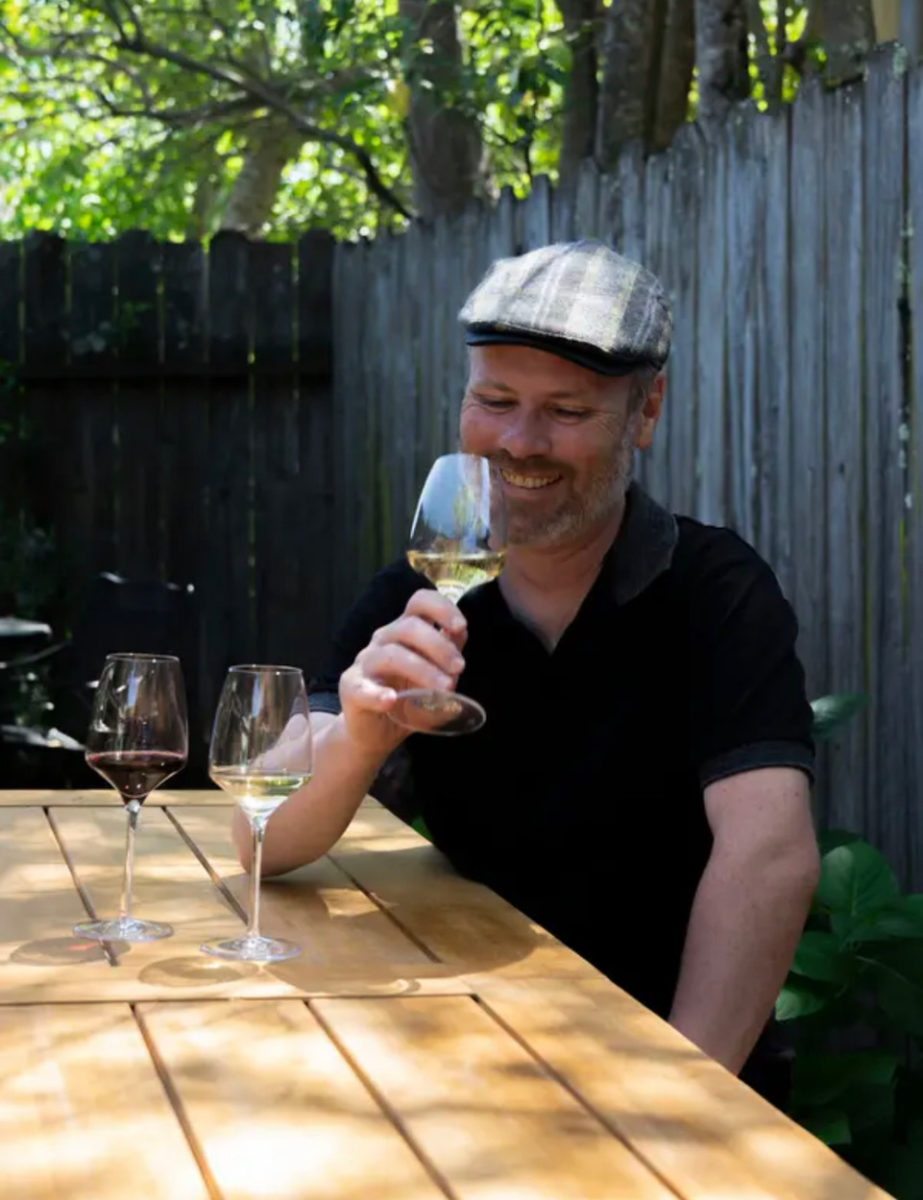
Favorite Grape?
Mourvèdre.
Favorite Region?
Jerez (Sherry – Xérès). Yes, I’m British.
When you’re able to travel again, which is the first region you’ll visit?
Well, the last place I was supposed to visit was Germany so I should resume my travels there.
Desert island wine?
Given it’s a remote, small island, let’s say Madeira!

by Stefan Cwik | Jun 17, 2020
When it comes to California wine, the state has a wide selection of well-cultivated grapes. There is no doubt that one of the beautiful parts of the California wine industry is that there are world famous examples in this one state of just as many grapes as the entire country of France. Do you want a well balanced Pinot Noir with haunting aromas and elegant flavors? They have it. Do you want a Syrah exploding with flavors of stewed fruits, pungent herbs, and tingly spices? They have that too. How about a Zinfandel? California is basically the only place to find it, so much so that at one point it was thought to be indigenous… But when it comes to production (and perhaps popularity), the King of all red grapes in California is Cabernet Sauvignon.
Popularity
It’s true that Chardonnay is Queen in California. As far as wine grapes go, Chardonnay is the most planted variety at 29% but Cabernet Sauvignon follows right behind at 22%. Alternatively, Cabernet Sauvignon takes the cake as the world’s most widely planted wine grape. So what is it about Cabernet Sauvignon that is so popular, particularly in California? One answer is that Cabernet Sauvignon is a hearty grape that can withstand intense heat, ripens late (so it rarely gets burned and the ripeness can be controlled), and can thrive well in dry soils that would be considered “less-than-ideal” by farmers of other crops. That said, it’s not a cheap grape to plant and it’s not a cheap wine to make. So the popularity of Cabernet Sauvignon among vintners is not strictly driven by its resilience. The fact is people love it. Across the world it’s a “go-to” wine for many people whether it’s the inexpensive, bulk production examples or the top-tier, expensive, high quality wines of the world. It’s safe to say that the flavors of Cabernet Sauvignon are simply something that most people enjoy.
Characteristics
So, what are the aromas and flavors that make Cabernet so popular? Well, the both disappointing and true answer is this: It depends on the region. But generally, Cabernet can be described as full bodied wine which expresses rich flavors of dark fruit, sometimes accompanied by red fruits, and accented by light aromas of dried herbs. You should also expect integrated flavors of baking spices, vanilla, chocolate, coffee, cocoa, and tobacco. These flavors come from oak maturation. In a cooler location or from a cooler vintage, you can expect these flavors to be less rich but balanced with higher acidity and lower alcohol compared to hot and dry locations or warm vintages. In the end, you can see that Cabernet expresses flavors that are highly attractive not only to seasoned wine professionals but the casual wine drinker. as well.
Cabernet in California
Looping back to the California wine industry, you might assume that the 22% production makes a lot of sense given all the virtues of Cabernet Sauvignon. But that isn’t the only reason that Cabernet rules California’s red wine industry. If anyone has ever seen the movie “Bottle Shock” you may recall the famous 1976 Paris blind tasting, the film’s central topic. French wines were tasted side-by-side with California wines. The movie focuses upon the white wines (Chardonnay) at the tasting, leaving out a key fact: California took first place not only in the white wine category, but a Napa Valley Cabernet Sauvignon was King of reds, beating out all the famous chateaux of Bordeaux. If there wasn’t sufficient evidence before that tasting, there has been no doubt since then that California produces world class Cabernet Sauvignon. Even more of a reason to pick up our selections by Hawkes Wine and Jax Vineyards for next week’s tastings.
The grape itself isn’t the only reason Cabernet Sauvignon from California is popular; the terrior of California showcases the best of what Cabernet has to offer. There are a few features about California that makes it so suitable for Cabernet. Looping back, the movie “Bottle Shock” is also relevant here. There is a great line which can go unnoticed if you aren’t paying close attention. The vintner Jim Barrett’s character is waxing poetically about California vineyards when he says something that is right on the money:
“The soil here is volcanic and alluvial. We can control the irrigation and water retention in these soils easily. We keep them dry to produce a hearty grape. A well watered vine produces a small lazy grape that produces a lazy wine.”
Terrior
This is a great summary of the sub regions where California Cabernet is planted. The key word here is dry. It’s not just the soil but also the climate. All of the regions where Cabernet is grown in California are considered to have a Mediterranean Climate. That means that it is not only hot but that the rainfall mainly occurs during the non-growing season. The growing season for wine grapes in most of California is long and dry. Cabernet Sauvignon grown in these conditions ripens for a very long time. This means the extraction and subsequent marination of flavor compounds from the skins occurring both inside the grapes and after harvest is longer. This results in more concentrated and integrated flavors from both the skin and the pulp of the grape. Think of it like marinating a piece of steak. The longer the steak sits in the marinade the more integrated into the meat the flavors become. On that note, you should absolutely pick up both wines by Hawkes Wine and Jax Vineyards and pair them with some steak after The Crafty Cask’s virtual tasting on Thursday June 18th. Cabernet Sauvignon and steak is a classic pairing and California Cabernets are some of the best wines for it. We prefer Ribeye!
You can generally expect California Cabernet’s lush black and blue fruit flavors with a silky or velvety mouthfeel and a rich long finish of vanilla, mocha, sweet tobacco, and baking spices. The flavors make the wine a meal in itself. Leading up to the event on Thursday, tasting notes for these wines will be provided and go into further detail on the flavors of California wine using these wines as a medium for exploration. Grab a the featured 2-pack of Hawkes Wine and Jax Vineyards so you engage with the notes as well as the tasting. It’s a wonderful opportunity to deeper explore the varietal that is California’s King of the red wines. See you Thursday!
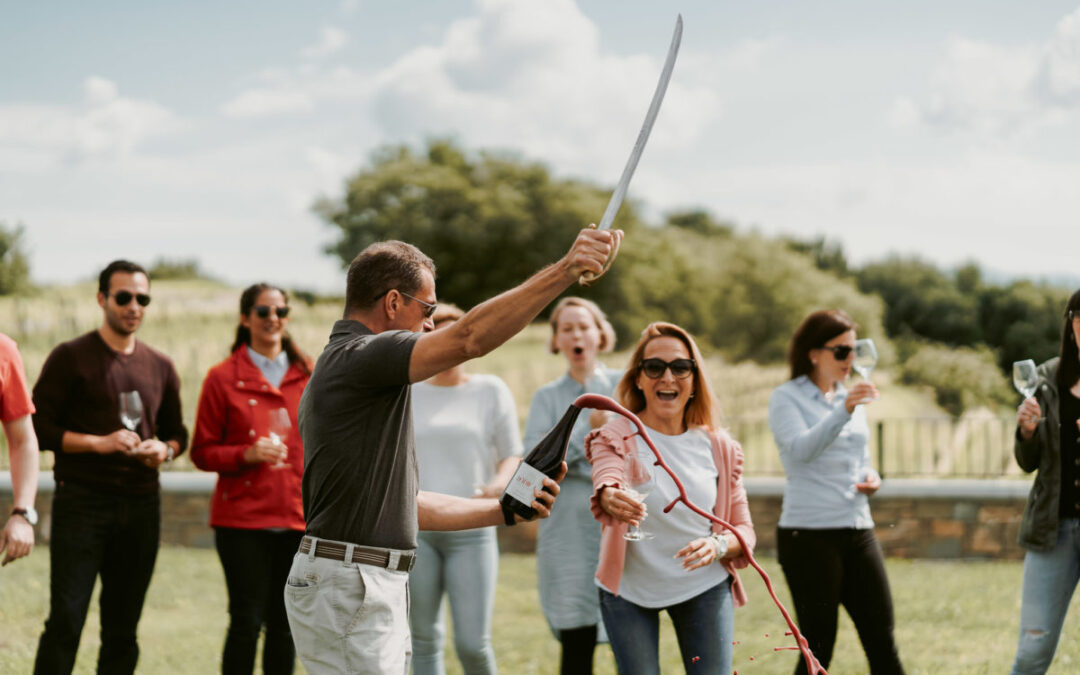
by Tom Smith | Dec 18, 2019
3 winegrowing regions, 28,000 wineries, 52 varieties of grapevine, 2 million people, one, incredible, wine tour
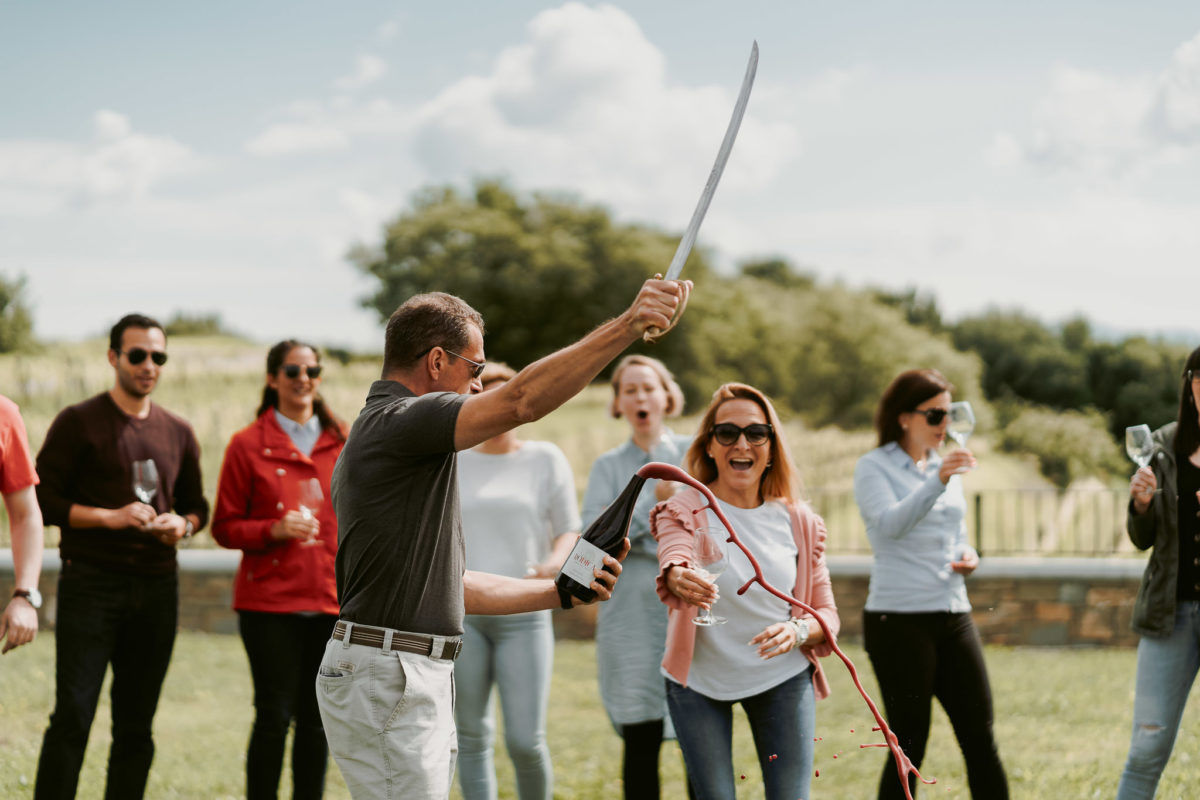
Whether you’re a wine connoisseur or someone who enjoys the odd droplet with their meal, a visit to Slovenia may quickly transform you from the latter into the former. Why? Because wine in this country is just so good.
A WINE TOUR IS A GLIMPSE INTO SLOVENIA’S VAST VITICULTURAL HERITAGE
Provenly the best way to try the exquisite flavours of Slovenian wine while getting to know the land and the people who make it is by joining a wine tour. It’s a first-hand experience that will introduce you to this country’s ancient, rich and highly respected winemaking tradition.
If you wanted to explore Slovenia’s numerous wine trails, you would have to take a year off just for travelling around its multitude of vineyards and wine cellars. It might be a small country, but its viticultural heritage is just so vast and complex. By joining a wine tour, you can get a glimpse into our world of wine and taste an assortment of top-class products in one amazing trip.
SLOVENIAN WINE IS TRADITION IN LIQUID FORM
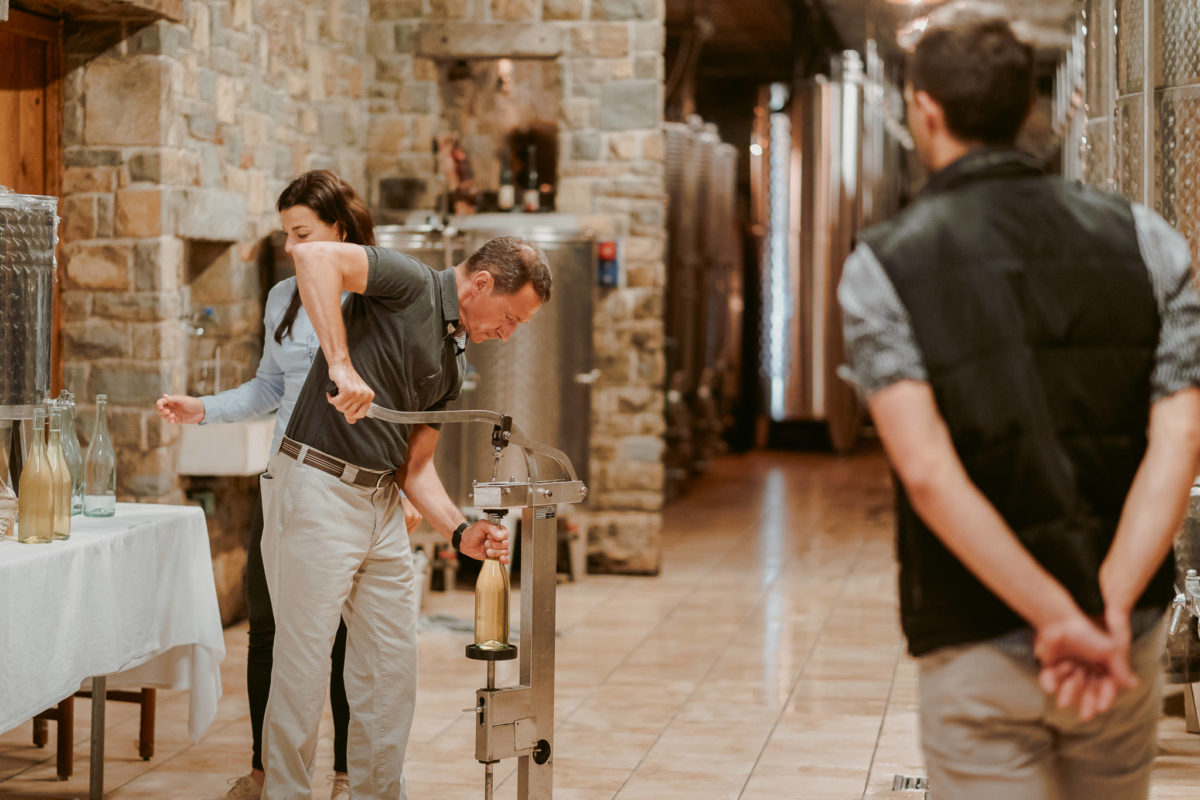
Climate, soil, and tradition. These are the main ingredients for top quality wine. Slovenia has all three. The history of viticulture in this place stretches all the way back to the 5th century BC, when Celtic tribes first began cultivating wine, long before any major European winegrowing regions. Today, the tradition of winemaking is stronger than ever. All thanks to Slovenia’s unique geographical diversity, providing a perfect mixture of microclimates that give life to 52 varieties of grapevine.
Although its population is only two million strong, Slovenia is home to 28,000 wineries, which translates to 1 vineyard per 70 inhabitants. Talk about a national hobby. Out of the annual production in excess of 80 million litres, 6 million litres of wine are exported, the rest is consumed locally. And who can blame them, since most of the country’s wine is of high quality. One more reason to come over and taste it for yourselves.
WHERE MEMORIES ARE MADE AND FRIENDSHIPS FORMED
Do you know how many incredible stories get told over a glass of fine wine? Of course not. Nobody does. There’s simply too many. Drinking wine is a social activity best enjoyed with some authentic local cuisine with other jolly wine tourers. When your company also includes local experts and a sommelier guide, you’re in for a very educational and fun time indeed.
Boutique winemakers, whose winemaking skills have been passed down through generations, will gladly share a few insider anecdotes, background stories, history of the land, and show you the ins and outs of their winemaking processes. These are the bonus features of our wine tour that you won’t get in any travel guide. Witty wine cellar wisdom included. It’s an interactive experience that takes place in Slovenia’s breath-takingly beautiful Vipava Valley, home to some of the world’s best wines.
Take a walk through the vineyards, soak up the natural splendour that surrounds you, and treat yourself to Slovenia’s most precious beverage. Life is good, so hop on a wine tour and make it even better.
Cheers!
WRITTEN BY: TOM SMITH
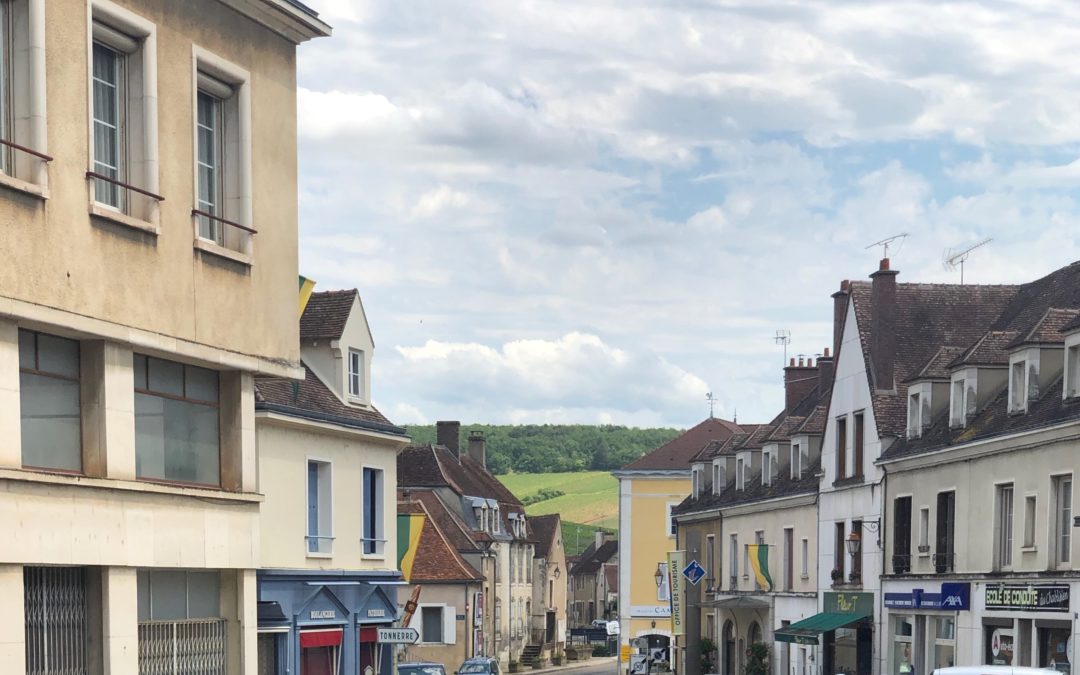
by Adam Chase | Jul 30, 2019
There is no better way to learn about wines than to travel the vineyards where the grapes are grown. Photos in books and videos are great, but they are framed to give the best view and evoke a desired image. As a wine educator, being “on the ground” makes me see things in a new way and makes me a better teacher. This past June I spent two weeks traveling from Chablis in the north, through Burgundy and then down the Rhone into Provence. My random thoughts are below. WSET students will get more details n classes starting next month.
Chablis
Chablis is a little “off the beaten track” if you are visiting Burgundy, but it is worth the detour. The village itself is incredibly pretty with classic French architecture, the peaceful Serein River running through the town, and the vineyards a two-minute walk from the town center. The Vineyards here are so close to the working town center that they actually almost “grip” one end of Chablis center. You realize the amount of vineyard land is not huge. Grand Cru hill sites quickly curve and slope into Premier Cru and basic vineyards. Luckily there is an easy to read map that identifies each site. The map sits at the foot of the small street that separates the agricultural area from the central part of town.
If you visit Chablis a stop at the tasting room of William Fèvre is a good idea. The wines are terrific and you can see large samples of the Kimmeridgean Clay soils, with their tiny fossilized sea creatures clearly visible, as well as Portlandian Clay, which is much different. A great place for lunch is Les Trois Bourgeons. This classic French restaurant is run by a Japanese couple and the food is fantastic!
Cote de Nuits
When you are anywhere in Burgundy’s Cote d’Or you really feel how the vineyards hug the eastern Massif Central. One commune flows into another. As you travel the main N74 road, the vineyards are a constant companion a stone’s throw to the west. What is even more surprising is how close these world-famous expensive vineyards are to the big city of Dijon. Essentially, they are southern suburbs of Dijon, and as you drive first through Marsannay and then Fixin and Gevrey-Chambertin you feel like you are traversing two worlds: behind you is the big city, to the west magnificent pastoral vineyards and to your east a suburban landscape with bowling alleys, car dealerships, KFC and pizza places and hotels. A little jarring but it shows that these are working grape farms rather than ethereal landscapes.
As you drive into the vineyards themselves thick vine density comes off the page and into reality. Driving paths are narrow and vineyard land is maximized. Books point to this fact, but to see it and navigate it as you pass from one great site to another really brings it to life.
Cote de Beaune
The villages of the Cote de Beaune can be described with one word: “charming.” Meursault, in particular, is quaint and beautiful with its central square, fountain and winding paths to vineyards. I recommend grabbing a morning coffee there and just people watching or day dreaming.
The vineyards in this area seem designed to encourage you to take long lingering walks. Vines are easily accessible and a two-minute walk from any part of a town. One of the things that you realize when you are among the vines is how easy it is to have one foot in a Grand Crus site and the other in a more basic site. The Grand Cru and Premier Cru sites are also much less steep when you are among the vines than when you see them on a map. Always at your feet is the classic clay and limestone soils.
Beaune itself is an easily navigable small city with the eastern vineyards watching over it as a protector. The tile designs on the roofs of the Hospices de Beaune gleam in the sun and make this part of Burgundy unique. One realizes immediately that you are in a city of business with large buildings with famous names like Louis Jadot and Joseph Drouhin around you but blending in to the classic city architecture. The restaurant that seems to be among the most popular is Ma Cuisine and I would agree – amazing food and a terrific wine list.
Cote Rotie and the Rhone
As with the Cote de Nuit flowing out of Dijon, the Cote Rotie vineyards almost touch the outskirts of the city of Lyon. Standing in the tiny town of Ampuis, the height and steepness of the slopes of these vineyards seems even more staggering than photos. You can see how hard they are to work and how the staked vines create a unique pattern on the steep slopes.
The Rhone is a working river and the peaks and valleys of its northern hills look down upon a waterway that is far more industrial than a wine book can show. It is easy to grasp why one hill is planted and another is not based on angle to the sun and reflection from the river.
As you drive south the hills become less steep but don’t entirely go away. Yes, the Southern Rhone vineyards are more spread out and the not as cliff-like as the north, but they are not completely flat either. Vines live next to vibrant fields of lavender and other crops. Wind breaks from trees are evident as a protection from the Mistral. Driving into Chateauneuf-du-Pape the galet soils create a rocky landscape that reflects the sun and adds brightness to the sun light. Stop by Vieux Telegraphe for a tasting of their amazing wines and then walk the vineyards which give a great view of the surrounding region.
Bandol and Cassis
The vineyards in Provence live easily among coastal towns and internal cities. The Alps gently extends to the sea here and creates a dramatic landscape which inspired painters like Cezanne and Van Gough. Driving the coast from Cassis through Bandol is a great way to get a feel for the area and its vines, but to really see the area you need to go up and inland. Bandol AOC is actually made up of towns, including Bandol itself. Mourvedre vines thrive in the damp soil and hot air.
Domaine Tempier is the place to go first to taste. It is in the village of Les Castellet and really led the change to fine modern winemaking in the area. Véronique Peyraud, daughter of founders Lucien Peyraud and Lucie Tempier is a terrific host and the wines are worth the accolades they continually receive.
Hopefully my thoughts have prompted you to visit the area – or even better, take a WSET class and then visit. You will be armed with information that will make the trip even better!
by Adam Chase | Jun 29, 2019
This fall WSET and Grape Experience will debut the new WSET Level 2 Certificate in Wine. It starts September 10 in San Francisco and September 18 in Boston. Registration information is at Wine Courses for Beginners
The following interview details the great changes in the program
Q. What is different about the new Level 2 Certificate in Wine?
A. Just about everything.The course that will start on September 10 is still designed to enable someone to look at just about any major wine label and be able to describe what that wine is like and why, but the number of grape varieties have been dramatically expanded. Varieties such as Barbera, Gamay, Semillon and Viognier are now part of the course. We will cover the classic wine regions – Burgundy, Bordeaux, etc., but also add more emphasis on newer regions in countries like Australia, the USA and Chile. The new approach gives a Level 2 student a broader set of wines to explore and makes the course that much more relevant to today’s wine industry. There is also a new textbook and class workbook as part of a complete WSET proprietary study pack.
Q. Are the class sessions themselves much different for the old course?
A. Yes, classes are more interactive than ever before, which better enables students to build off of previous sessions and what they have read on their own. There is a greater emphasis on why a wine tastes the way it does and how the same grape can make uniquely individual wines in different regions. Of course, we still taste several wines in each session but when we do so we are better equipped to taste both natural climactic factors and the human choices that went into each wine. The end result is greater knowledge put into practice, building confidence among students.
Q. Spirits is no longer part of the Level 2 course?
A. Spirits has been removed from Level 2 Wine and is now taught as a separate Level 2 Spirits course.This change means we can cover more material in the Level 2 Wine course in the same amount of time. In some ways, Spirits in the old Level 2 course was an afterthought. Now, in the Level 2 Spirits course, the subject gets the broader and more in-depth focus it deserves. We will offer Level 2 Spirits this fall, and it can easily be taken in conjunction with Level 2 Wine.
Q. Who is the right student for Level 2 Wine?
A. Level 2 Wine is for just about anyone.The course is designed for both beginners and people who already have some knowledge in wine but want a stronger foundation. We don’t assume for Level 2 that a student has any previous knowledge. For the genuine beginner, the course will build a solid foundation for a career in wine or will just increase personal knowledge. For someone who has a working knowledge already, Level 2 fills in any gaps and provides a solid launching pad for learning more. The end result for all students taking Level 2 is increased confidence and greater overall enjoyment of wine.
Q. What is the final exam like?
A. The exam remains the same as before: a one hour, 50-question multiple choice exam. Students need to correctly answer 55% of the questions – about 28 of them – to pass and receive the WSET Level 2 Certificate in Wine.
For the September 10 San Francisco course register here: WSET Level 2 San Francisco
For Level 2 Spirits register here: WSET Spirits Courses
For the September 18 Boston course register here: WSET Level 2 Boston Weeknights
by Adam Chase | Mar 22, 2019
People constantly ask me how they can become a wine educator (often hoping to teach WSET courses). My first response is to ask, “why do you want to teach?” The answers fall into five categories:
- I want to share what I know with others
- I think it is the logical thing to do once I get my certification, isn’t it?
- I think it would be fun
- Umm….
- I want to help other people grow their wine knowledge, be more confident and have more enjoyment with wine
Answers 1-4 always make me suspicious. Often, people get a certificate and just want to announce to others that they have achieved something special. These people are often the worst teachers because they pontificate rather than coach and support students.
Teaching can be fun, but it is also hard work that involves preparation, patience and consistent re-evaluation for continuous improvement. The goal is to help other people learn and grow in a way that builds knowledge, skills and the confidence to use them. Rarely is this just telling a student what they should know but rather helping them tell you what they have learned.
A good teacher balances being an entertainer, manager and knowledge sharer. Some people are natural teachers who inspire other people to want to know more, while also keeping a class on topic and on time. They can easily read individuals in the classroom and what their learning needs are. For other people developing good teaching skills takes more work. While still others probably are just not suited for teaching – even if they know a lot about wine (by the way, there is no shame in this, as wine knowledge and teaching ability are unrelated).
If you do think you might like to be a wine educator there are some steps, you can take to build your skills and see if you are suited to the role. I suggest starting small with the process here:
- Teach Others Informally
Start by hosting a fun in-home wine tasting party. Pick 3-5 wines you like and create a plan on what you want to tell your friends about them. Think about what they might want to know and what their mood and mind set will be (likely to have fun, learn something without being overwhelmed and to enjoy each other’s company). What nuggets of information can you give them that they will be able to see when they taste the wine and then use in the future? Then ask for honest feedback – what did they like, what did they think you could have done better? Also, be kind to yourself. You will be nervous and that is OK. Try to do these wine tasting events regularly until you feel you and your audienceis really enjoying them.
- Ask to Train Other People at Work
Regardless of whether you work in the wine industry, look for opportunities to train co-workers, new hires or educate customers in whatever you do. Create session plans for formal training and find means to gauge whether your audience was engaged and learned. For consumers, think about how you build a relationship. For any person you want to get good at empathizing, understanding their needs and ability to understand new information.
- Teach a Fun Consumer Wine Course
Think about a one-night short wine class that you might enjoy teaching – but more importantly, that you think individuals might sign up for. Plan out how the session would go down to the minute (build in time for extended tasting). Then seek out an adult education center and propose it to them. Have a budget for the wine and be prepared at first to possibly offer your time for free. Once you have a scheduled course, teach it first to a few friends or family so you can get the timing down and work out kinks that didn’t show up on paper. Think about teachers you enjoyed learning from. What did they do? Can you emulate their approach in any way? Keep teaching these classes and get and be open to feedback – It is the only way you can improve.
- Co-Teach a WSET or Other Certification Class
When you feel that you have developed good teaching skills – that students are engaged by your style, that you can control a room and manage time and that participants are actively learning from you – ask a WSET APP or other wine certification program if you can teach part of an entry level course. When the opportunity arrives do your homework. Ask about the class dynamic, the classroom and review the session plan with whoever you are sharing the class with. Then practice at home before the actual session. After the class, think about what went well and what did not. Then speak honestly with your co-teacher and express what you felt and really listen to what they thought.
Be honest with yourself about both your skills and your enjoyment level when teaching. If you don’t really love doing it, your class/audience won’t be engaged or happy either. You may find that the fun non-certification classes are more what you like doing. You might find the whole process is just not for you. Or you may find that you can inspire other people in a way that makes both you and them really happy!
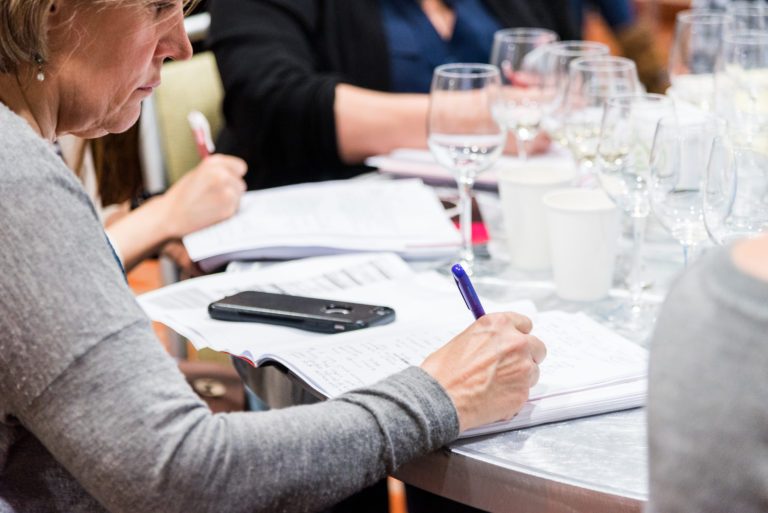
by Adam Chase | Feb 25, 2019
In January and February, all of Grape Experience educators – including myself – attended day-long workshops to learn about the new WSET Diploma in Wine that’s being introduced in August. There are some major changes to the current Diploma program in both teaching approach and in content. It was critical that all WSET educators understand the intentions behind the new Diploma in order to be able to teach the new program successfully.
I am incredibly excited about the changes, which I think will greatly aid students in their approach to studying for and taking the rigorous set of Diploma exams. First of all, the new Diploma will be more interactive: there will be an online textbook and an extensive library of resources for students to access. The classroom experience will be less lecture-based with more dialogue between educators and students – an opportunity for us all to learn from each other and also to put our understanding into practice.
As educators at Grape Experience, we have always tried to make clear how best to approach the Diploma exams in order to pass them, but it has not always been easy. The key to the Diploma is to apply your knowledge rather than simply state the facts. That hasn’t changed, but WSET now makes that aspect much more explicit.
The Diploma is now logically organized into two approaches. The first two units, D1 and D2, are classed as “foundation units.” As the name suggests, these provide the foundation for the rest of the exams. D1 is focused on wine production – i.e. the vineyard, the winery, and post-fermentation. This used to be assessed by a multiple-choice exam, but now it consists of open-response questions so that students can demonstrate their understanding. This new exam approach should help students better retain and apply viticulture and winemaking knowledge in later units.
D2 is the business of wine, which also consists of open-response questions and no longer has an exam based on a pre-issued case study scenario. Both of these two units must be taken before going into the later units to ensure that students have a foundation of knowledge which they can apply when answering questions about the wines of the world.
The other three units focus on production knowledge. D3 is wines of the world, similar to the current Unit 3, while D4 is sparkling wines and D5 is fortified wines. D3 hasn’t significantly changed, except for one major aspect: WSET’s Global Director of Education Karen Douglas emphasized that students are given more time for both tasting and theory so that the best students have the opportunity to convey their knowledge and understanding. The sparkling and fortified wine exams are now much more in line with D3, in that they have more complete, open-response questions rather than simple statements that “previously invited students to dump their knowledge.”
Finally, students finish their studies with D6, a research paper of 3,000 words focusing on current issues in the world of wine – a natural conclusion from the previous five units.
For students already taking the Diploma, there are some important things to note:
- all previous passes from exams already taken stand: you do not need to retake any exam you have already passed.
- Karen stressed that the WSET has worked intently to make the changes as transitional as possible – taking the new courses and exams will not be an upheaval; in fact, there will be a lot more material and resources to help you pass future exams.
- the online textbook will be available in July. It will contain information you have already studied, but it is worth going to as a resource and for review.
- there is no longer a spirits element to the Diploma. Existing students who have passed the spirits exam are able to earn the Diploma in Wine and Spirits. If you haven’t taken the spirits exam, then you are able to earn the Diploma in Wine.
The work that the WSET education team has put into the new Diploma program is amazing and represents a significant improvement in all aspects of the current course. I anticipate these changes will give the students a much better chance of passing the Diploma while still maintaining its rigorous standards. The WSET have put a great deal of time and effort to create the new Diploma, and I think they have done a superb job.
 Look for the new Diploma to be first offered for D1 Winemaking the weekend of August 3-4 in San Francisco and shortly thereafter in Boston.
Look for the new Diploma to be first offered for D1 Winemaking the weekend of August 3-4 in San Francisco and shortly thereafter in Boston.
by Adam Chase | Oct 5, 2018
Sauvignon Blanc is one of the most popular white wine varietals, especially since New Zealand producers started exporting their crisp fruit driven styles in the late 1980s. American Sauvignon Blancs are often labeled “Fume Blanc.” This branding was started by Robert Mondavi, who in a reference to the Smoky Pouilly-Fume Sauvignon of the Loire, added oak to his wines. These days, however, the name “Fume Blanc” can be used as a label for any Sauvignon Blanc wine – whether it sees oak or not.
I would guess that most people who love Sauvignon Blanc prefer the crisp, pure fruit driven style. Oak often can get in the way of the delicate aromas. Concours Mondial de Sauvignon decided to explore how, if at all to use oak in this varietal wine and their findings make for interesting reading: https://sauvignonselection.com/en/are-sauvignon-aromas-incompatible-with-oak/
This article is great reading for anyone interested in the science of winemaking. WSET Level 3 and Diploma students in particular should take a look as well.
In my wine tasting journeys I have found that most oaked Sauvignon suffers from too heavy a hand. There are some incredible Dagueneau wines that see a touch of oak from Pouilly-Fume. Grgich Hills Estate Fume Blanc from Napa – of course along with Mondavi Fume Blanc – show the American style of oaked Sauvignon at its best and are worth sampling.

by Adam Chase | Jun 28, 2018
 The WSET Diploma Certificate (Level 4) is one of the most recognized and valuable credentials in the wine world. This challenging two-year program offers people who already have strong wine knowledge, the opportunity to go to an elite level. The program will be significantly revised in 2019 but if you are thinking about Diploma, now is the time to start (WSET Diploma Online). Here’s why:
The WSET Diploma Certificate (Level 4) is one of the most recognized and valuable credentials in the wine world. This challenging two-year program offers people who already have strong wine knowledge, the opportunity to go to an elite level. The program will be significantly revised in 2019 but if you are thinking about Diploma, now is the time to start (WSET Diploma Online). Here’s why:
- Diploma isn’t a static course, but a dynamic set of focused “units” that are constantly updated to reflect today’s trends and issues facing the wine and spirits industry.The changes that go into effect in August 2019 are just a more comprehensive continuation of updates that happen every year to reflect new underlying forces shaping the wine market.
- Diploma candidates learn through personal exploration – not through a set textbook. To do well in Diploma students need to follow their own curiosity, explore producer and regional web sites and venture out into the field – be it a winery, distillery or retail business visit. This learning method, with WSET giving students an outline of what they need to know, is what makes Diploma so relevant and fun, and it will continue to be a guiding principal of Diploma for years to come.
- The current Diploma program offers candidates a chance to explore the spirits industry alongside wine. In the program that will take effect summer 2019, spirits will be eliminated. If you want the Diploma in Wine and Spirits you must start this summer. Conversely, if you want to start this summer but don’t want to take the spirits unit that is a definite option.
- Grape Experience has been delivering the current Diploma program for over 12 years – the longest running US provider west of the Mississippi and recognized with an Educator of the Year award. We understand what it takes to succeed in today’s Diploma program and we offer individualized personal coaching backed by hundreds of successful candidates who achieved their Diploma studying with Grape Experience.
- Candidates who start Diploma now will be in no way disadvantaged when the revised Diploma in Wine program comes into effect. Anything you pass before August 2019 will be credited towards the new Diploma and there will be no additional requirements added – Diploma has 6 units you need to pass today and there will remain 6 in the future.
WSET Diploma is an exceptional learning opportunity that allows you to interact with people from all over the wine world. It is a chance to develop superior analytical skills while also making contacts and developing friendships that will last a lifetime. The knowledge, confidence and personal growth that Diploma offers is invaluable.
Take advantage of starting the program this August. You can find out more about getting a WSET diploma online or feel free to contact me, Adam Chase at adamc63@me.comor by calling 415-309-0761. I would really enjoy discussing the opportunity that lies ahead for you!

by Adam Chase | Dec 26, 2017
I hear from many people with interest in Grape Experience WSET courses who are unsure where to start or if they want to make the commitment. Those who do take the plunge always feel great about it. If you are thinking you would like to explore WSET Wine, Sake or Spirits education there is no time better than now!
How to Decide Where to Begin:
WSET courses are broken out by “Levels,” and these terms can be confusing. Each level has a specific end goal or learning outcome regardless if it is for Wine, Sake or Spirits. For Wine and Spirits most people have enough knowledge already to skip right to Level 2. Sake is lesser known and Level 1 may make the most sense.
Level 1: Define and Understand
Level 1 focuses on true beginner knowledge. We answer questions such as:
- What is wine or sake?
- What basic styles does it come in – dry, sweet, sparkling, red, white and rosé?
- What is the best way to serve it – temperature, glassware, food pairings
I often say for the wine courses that if you know that Chardonnay is a white grape that makes white wine that should be served chilled, and that Cabernet Sauvignon is usually a red wine, then it might make more sense to start at Level 2.
For Sake, however, Level 1 can be an easy way to start exploring a beverage category that is growing each day. We offer Level 1 Sake a few times each year with the next courses starting this winter WSET Sake Class
Level 2: Identify and Describe
Level 2 is where most WSET wine and spirit candidates start. Courses under Level 2 are also fine as beginner classes but they go into more depth then Level 1. The goal here is for a student to be able to look at any major wine or spirit bottle and describe what is expected inside without having to taste it – that doesn’t mean that we don’t taste in Level 2 classes – we absolutely do and a great component of Level 2 is to build strong foundational tasting skills.
Students who take Level 2 often tell me that their confidence has skyrocketed when it comes to choosing or talking about wines and spirits. I think Level 2 provides a smoother, perhaps less risky entry into the WSET system of courses, even for people with already strong wine knowledge. Our next set of Level 2 courses starts this February: Wine Courses for Beginners
Level 3: Explain
Level 3 is significantly more challenging than Level 2 and demands more study and participation time from the participant. Still, the depth of knowledge and tasting ability that comes from a Level 3 course is totally worth the effort. Level 3 courses do not have prerequisites.
The basic goal of Level 3 courses is for the participant to be able to explain the reasons why a wine or sake looks, tastes, and costs the way/amount it does. This Level deeply delves into natural and human forces that impact production and quality. Tasting plays an equal role to the theory here and students will certainly learn to blindly identify through sight, smell and taste how a wine or sake is made and its ultimate quality Level.
Level 4 Diploma: Analyze
Currently WSET only offers a Level 4 course in Wine and Spirits. This is a two-year program that requires participants first pass the Level 3 Wine course. The goal here is to learn to analyze the natural and human production factors, market trends and new technologies/approaches that are shaping today’s wine and spirit markets.
Participants build skills through first-hand, as well as book investigation into the major global wine and spirits production centers and companies. The course is incredibly challenging but well worth it!
So, there is no time like the present! Check out all of the WSET courses we offer and take the plunge!


by Matthew Gaughan | Oct 23, 2017
This month I took Grape Experience’s WSET Level 1 Sake course. As a wine educator, this was a fascinating experience, as sake is such a different beverage to wine. I learned that the sake language, aroma descriptors, and terminology generally don’t apply to wine (there are more overlaps with whisky and beer).
If you’re coming to sake from a wine background – which most people in the class were – it’s refreshing and stimulating having to think about and describe a quality beverage using a different approach. For instance, I consider acidity to be one of the most important factors to the structure and quality of a wine. In sake, acidity is so low that it’s quite a shock, but once I became accustomed to that low acidity I stopped thinking about it so much.
Another difference is that alcohol is higher than wine (at 15-17% ABV), but there is a surprising delicacy to sake that is often lacking in wines at high levels of alcohol. Despite tasting ten sakes, at the end of the day I felt a freshness that I don’t feel after tasting ten wines. Quite why that is I don’t know, but it was something other students commented on.
Umami aromas (found, for example, in mushrooms, tomatoes, or parmesan cheese) are present in wine, but in sake, especially the honjozo and junmai styles, umami aromas are dominant. This makes sake a good pairing with salty food, as umami and salt flavours complement each other. There’s perhaps no surprise in that as sake and seafood is a classic Japanese food pairing.
Sake, though, has huge potential for food pairing beyond traditional Japanese cuisine. On the course, we tasted two sakes (honjozo and ginjo) with different foods: lemon, tomatoes, crisps, parmesan cheese, honey, and soy sauce. It’s rare to find a drink that can stand up to both tomatoes and honey and the only food that the sake struggled to complement was the lemon, its tart acidity overwhelming the low acidity of the drink. But given that lemons are rarely eaten on their own, I didn’t consider that an issue!
This is a great course which I thoroughly enjoyed. It provides an insight into Japanese culture, an overview of sake, and a good idea of the different styles and how they pair with food. Most importantly, it explains why sake tastes like it does, the reasons behind each style, and is a great help for walking into a shop or a restaurant and knowing which sake to buy and why.
The course was taught by Marina Giordano, who is a colleague of mine at Grape Experience. I can say without any prejudice that she is a great tutor with a thorough knowledge of the WSET and of sake. I walked into the course intrigued by sake; I came out of it enthused and knowledgable. I can’t ask for more than that from any course.
by Adam Chase | Aug 9, 2016
One of the most common things I hear from people interested in the WSET program is “I want to take Level 2 but I can’t because I haven’t taken Level 1 yet.”
Let me set the record straight: you do not have to take Level 1 to take Level 2. In fact, for most people who have some basic wine knowledge I strongly recommend starting with Level 2.
Level 2 is the perfect entry into formal wine study and, as a course, builds a complete foundation for future learning or a confident, successful wine career. People enter Level 2 with various degrees of knowledge. Some people may know very little beyond grape names and wine brands – their foundation has a few key “brick” out, but needs to be more formally built. Other people may know quite a lot about a specific wine or wine region – Napa or Bordeaux for example – but have limited knowledge about other producing areas such Australia, Chile or Germany. For this person Level 2 fills in the holes and creates a solid wine knowledge structure.
Confidence is the key word to describe the outcome of a successful Level 2 candidate. The course focuses on creating a strong understanding of the major wine grapes and how they show themselves in regions across the globe. Level 2 provides a survey of wine styles and levels of quality. After Level 2, a student can look at any major wine label and identify how that wine should taste, its level of quality and relative price point. They can speak about, purchase and make recommendations on wine with confidence.
Level 2 also showcases how to taste like a professional. It introduces WSET’s famous Systematic Approach to Tasting, which creates an even playing field to compare and contrast all wines. During the 8 segments of the Level 2 course over 45 wines are tasted.
Level 2 delivers students enough knowledge to make them savvy wine consumers or assured wine professionals, but not so much as to overwhelm them. Grape Experience Level 2 classes are interactive and designed to be fun. People work together to figure out how to speak about a wine and creatively convey its attributes. There are no wrong answers or dumb questions. Instead, the class is a safe place to formulate new ideas, build better understanding and to network with other people.
The Level 2 course culminates with a one-hour, 50-question multiple choice exam. The exam tests knowledge learned in a fun, almost game-like way. I like to say it is sort of like playing “Who Wants to Be a Millionaire,” except you can’t phone a friend or ask the audience. What you can do is usually eliminate two of the four answer options.
So who is Level 2 really for? The answer is just about everyone. If you are thinking of taking a formal wine course or starting the WSET program than Level 2 is for you. If you are working in wine but want to enhance your knowledge to be better at your job or grow in your career, Level 2 is the place to start. If you are thinking about starting a career in wine or want to work in regions outside of the US than Level 2 is what you need to begin that process!
Grape Experience has several options available to join a Level 2 course. All can be found at https://www.grapeexperience.com/wine-and-spirit-school/beginner-wine-courses/
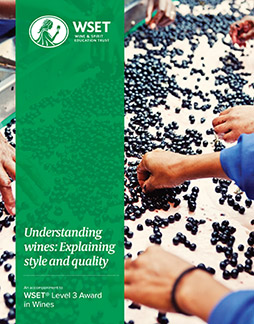
by Adam Chase | Jun 27, 2016
This August, WSET will launch an all new Level 3 Certificate in Wine, and Grape Experience Wine & Spirit School will be among the first providers to implement the new course. The new Level 3 is the most dramatic and best revision of this sought after qualification I have ever seen in my 20 years as a student and WSET provider.
Everything about Level 3 is new: the course program, textbook, exam, and even the suggested teaching method. Gone are the days of the old WSET Advanced Certificate with its black and white books and formal lectures. The new Level 3 is more relevant, interactive and designed to allow students to immediately put in place what they learn into their daily lives and work.

The new Level 3 utilizes the Socratic approach to teaching – a method familiar to people who have attended business or law school. It is one of my favorite components of this new WSET course. This approach focuses on giving students questions, not answers, to foster critical thinking. Team engagement and debate drives learning. Teachers will guide students through material but the onus will be on each class member to explain thoughts, ideas and apply their own knowledge.
Utilizing the Socratic method may scare some WSET providers. Instead, they may just use the old Level 3 lecture approach and session plans to teach the new course. I believe this would be selling our students and the program short. Grape Experience has spent time and resources to attend in person WSET training programs on the new Level 3 and to teach our teachers how to best deliver the new material.
My goal as a provider has always been to put the highest quality course forward, even if it means we make less profit margin. I know first-hand the power a great WSET course has on a student’s enthusiasm and ability to use information learned. I had that feeling in every WSET course I ever took and I want people who enroll in a Grape Experience WSET course to feel it as well.
The new Level 3 course program spends considerably more time on the natural and human forces at work in the vineyard and winery. It then drills down at how they manifest themselves in similar wines styles and terroirs. For example, white, lesser aromatic wines of Burgundy are studied with similar styles from the Loire and Bordeaux. Rich Mediterranean red wines are also studied together. The old region by region approach is not lost, it is just reformulated to make more sense and to have more applicable across the board relevance for students.
Support materials for the course have also improved. There are now 13 short films that students watch online to review the basics of regions. The text book is more clear, up to date and has considerably more information on viticulture and winemaking. The study guide is larger and contains some of the best and most useful wine maps I have ever seen.
The exam format remains relatively unchanged but with greater onus on the student to explain and apply key production and style drivers. The tasting component no longer requires students to identify a specific wine and price, but rather focuses on the style of the wine. I believe preparing for this exam will help make those students who want to go on to Diploma more successful.
Grape Experience is excited to launch the new Level 3 starting August 8 in Napa and August 9 in San Francisco. Boston will begin on September 26. Classes will meet one night a week for 16 weeks. We feel this format gives students more time to live with and learn the material – rather than cramming the course into 4 weekend days. It also makes preparing for class participation more focused and less daunting.
If you have never taken WSET Level 3 now is the perfect time. If you already have the certificate I hope you will encourage your friends and colleagues to take the course. Information can be found at:
https://www.grapeexperience.com/wine-and-spirit-school/wset-diploma-program/
The people at WSET who spent so much heart, soul and time working to build the new Level 3 deserve credit and appreciation. Your efforts show in a job well done!
by Adam Chase | Jun 4, 2015
Spain continues to soar in the wine world. The country now claims to be the largest wine producer in the world, and the styles and quality of wines from Spain continue to grow. Modern viticulture and winemaking techniques are changing sleepy small ancient regions into modern superstars.
Two producers I recently tasted show the uniqueness, quality and value of Spanish wine. Txomin Etxaniz is a producer I return to time and again, never to be disappointed. Gotim Bru by Castell del Remei is a red wine that at delivers huge taste at an under $15 price. Both of these wines come from two of Spain’s smallest regions and show modern viticulture at its best.
Txomin Etxaniz is from the smallest DO in Spain, Getariako Txakolina. This tiny region in Spain’s Basque region on the northern Atlantic coast plants the indigenous vines Hondarrabi Zuri (white) and Handarrabi Beltza (red).
Txomin Etxaniz has been making wines since 1649. Their vineyards are on chalky terraced soils that overlook the Atlantic. The winery creates white and rosé wines that are light, yet full of character. Txomin Etxaniz white is a perfect seafood wine – which dominates the cuisine of the area. It is crisp and minerally, but with definite notes of citrus – lemon and a hint lime – as well as green apple and grassy notes.
Txomin Etxaniz rosé is bright and packed with light red fruit flavor – cherry, raspberry and plum. It too has the chalky crisp mineral notes. The wine rivals some of the best rosés of the Rhone valley and Provence and offers the taste of summer in a glass.
Gotim Bru is a wine my brother introduced me too as one of the best value wines he has ever tasted. This wine comes from the DO Costers del Segre in Catalonia. The producer dates to 1780 and was started by Bordeaux families who introduced Cabernet Sauvignon to the region.
Gotim Bru is a blend of Tempranillo, Garnacha, Cabernet Sauvignon and Merlot. The sunlight and granite soils of the region mark the wine with a dense fruit quality – fresh and dried cherry, strawberry and current notes. Carefully utilized French and American oak add flavors of chocolate, toffee and smoke to the wine. Gotim Bru just can’t be beat for its layered quality, and Spanish elegance.
by Adam Chase | Jun 4, 2015
I’m always looking for something new to serve at a summer party. There is only so much Pinot Grigio and Sauvignon Blanc I can take. This 4th of July I thought why not Gavi? This Italian white wine is light and has the crispness, and lemony, slightly grassy flavors that go so well with summer foods.
The wine worked! People initially thought Gavi was a brand of Sauvignon Blanc or Pinot Grigio. When they realized it was actually a unique wine from an Italian region in Piedmont made from the Cortese grape they were pleasantly surprised. This revelation was a conversation starter – trips to Italy, Italian food and, more importantly to me, how many people are looking for something new to drink.
A disclaimer: if you are looking for an under $10 wine, Gavi will not be it. But, if you are willing to spend a little more than this is a wine worth trying. Most Gavis start at $10 and can go as high as $25. Three I have recently tried are described
Batasiolo Gavi DOCG is a wine that defines balance. Ripe Meyer lemon and lively acidity sit together on a light, yet slightly creamy body. The wine is easy to sip and in particular compliments cold seafood especially well.
Cristina Ascheri Gavi DOCG has a freshness and elegance that is a hallmark of all of Ascheri’s wines. This Gavi is subtle and lingers with its lemon, herb and mineral flavors over a long finish. It is great with creamy cheeses and fish.
Araldica La Luciana Gavi DOCG also has that strong mineral backbone along with a slightly lemon lime flavor and tartness. This is another versatile wine that pairs well with almost any food.














